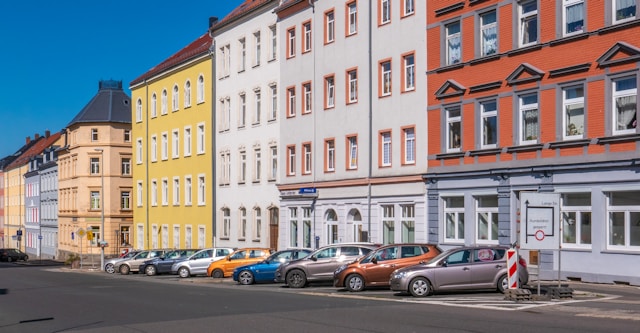Differences in Housing Policy and the Real Estate Market: Malaysia vs. Other Countries
The housing market is an extremely important component of any country’s economy. A booming housing market usually serves as a foundation for wealth accumulation and social stability. Influenced by its socio-economic, political, and cultural context, Malaysia’s housing policies and real estate market offer some unique characteristics when compared to other countries.
In this article, we will discuss several differences between Malaysia’s housing market and those in other countries. We will look at aspects such as affordability, government policies, and the challenges faced by first-time homebuyers.
1. Affordability and Homeownership
Malaysia's Housing Affordability Challenges
Affordability has been a growing concern in Malaysia and there are still no effective solutions. The rapid rise in property prices over the past decade has made homeownership challenging for many Malaysians, particularly the younger generation from urban centers like Kuala Lumpur, Johor Bahru, and Penang. According to a 2020 report by Bank Negara Malaysia, homeownership is becoming increasingly difficult, with the average price of a home in Malaysia being more than 4.4 times the median annual household income.
While government policies such as the Affordable Home Ownership Campaign (HOC) and other initiatives attempt to make homes more accessible to the middle-income group, many find these measures insufficient. The gap between income growth and property prices continues to widen. As a result, homeownership is out of reach for many.
Comparative Affordability in Other Countries
In comparison, countries like Singapore have implemented more robust policies to control property prices. Singapore’s public housing system, where approximately 80% of its population resides in government-built Housing Development Board (HDB) flats, is designed to make housing affordable to citizens across different income groups. The HDB provides subsidized flats, which are sold at a discount to Singaporeans. Besides, the government also places restrictions on foreign ownership of real estate to ensure local buyers are prioritized.
In Australia, housing affordability has also been a significant issue, particularly in cities like Sydney and Melbourne. However, Australian government initiatives such as First Home Owner Grants and stamp duty concessions have aimed to alleviate the burden on first-time buyers. Despite these measures, Australia’s housing market remains one of the least affordable in the world, with home prices in major cities often exceeding 10 times the average annual income.

2. Government Housing Policies and Initiatives
Malaysia's Policies and Programs
Malaysia has introduced several housing policies over the years to address the affordability crisis. Key initiatives include:
- PR1MA (Perumahan Rakyat 1Malaysia): Aimed at providing affordable homes for middle-income Malaysians. However, many argue that the eligibility criteria are not aligned with the real income of Malaysians.
- MyFirst Home Scheme: Aimed at helping young people and first-time homebuyers purchase their first property, with lower deposit requirements and financing options.
- Rent-to-Own Schemes: Some developers offer rent-to-own schemes as a way for buyers to enter the market without needing large upfront capital, though these are not widespread.
Despite these efforts, Malaysia’s policies are often critiqued for not fully addressing the root cause of the affordability issue, which is the high property prices in relation to average income.
Government Policy in Other Countries
In Germany, the government plays a significant role in regulating housing. Long-term affordability and renters’ rights are always the priorities. The Mietpreisbremse (rent brake) law limits how much landlords can increase rent in cities with high demand. This helps to provide greater stability for tenants. Unlike Malaysia, where homeownership is heavily emphasized, Germany has a large rental market with around 50% of the population renting their homes.
In Japan, the government’s policy focuses on providing sufficient housing through public housing projects, as well as introducing tax incentives to encourage property development in urban areas. The Japanese government also provides low-interest loans for first-time homebuyers, much like Malaysia’s MyFirst Home scheme. However, the culture of renting in Japan is less prevalent compared to Malaysia, where homeownership is often viewed as a significant achievement.

3. Foreign Investment in Real Estate
Malaysia’s Open Real Estate Market
Malaysia’s real estate market is relatively open to foreign investment. Foreigners are allowed to purchase property in Malaysia if they meet certain criteria, such as a minimum purchase price of RM 1 million for residential properties in major cities. This has led to increased interest from foreign investors, particularly from countries like China, Singapore, and the Middle East.
The influx of foreign buyers has led to higher property prices, which in turn affects local buyers’ ability to afford homes. However, the Malaysian government has responded with policies such as the Foreign Investment Tax to cool down the property market and ensure that homes remain accessible to the local population.
Foreign Investment in Other Countries
In contrast, countries like Switzerland and Denmark have strict controls on foreign ownership of real estate. In Switzerland, foreigners are generally not allowed to purchase property unless they meet certain residency or business investment criteria. Similarly, in Denmark, foreigners can only buy property if they have lived in the country for at least five years.
On the other hand, countries like Canada and New Zealand have seen significant inflows of foreign investment in the real estate sector, which has contributed to skyrocketing property prices. Both countries have recently introduced measures to limit foreign purchases to make housing more affordable for local buyers, including foreign buyer taxes and restrictions on the type of properties foreigners can purchase.
4. Property Taxes and Incentives
Malaysia’s Property Tax System
In Malaysia, property taxes are relatively low compared to other developed nations. The main tax levied on property owners is the Assessment Tax, which is imposed by local authorities based on the annual rental value of the property. However, the tax rates vary from state to state and are generally low compared to countries like the United States or the United Kingdom.
There are also stamp duties on property transactions, which can be pretty high for high-worth properties. While there are exemptions for first-time homebuyers and certain government schemes, the overall tax burden on property transactions is moderate.
Property Taxes in Other Countries
In the United States, property taxes are much higher and can vary significantly by state. Local governments levy property taxes based on the assessed value of the property, with rates often exceeding 1% of the property’s value annually. These taxes fund local services like schools and infrastructure, creating a more direct link between property taxes and public services.
In the United Kingdom, there is a similar council tax system, which is based on the estimated value of the property. In addition, the UK has a stamp duty system on property transactions, with higher rates for more expensive properties. These taxes contribute to the overall cost of property ownership, making it more expensive in the long run.
Conclusion
In conclusion, Malaysia’s housing market is shaped by its own unique set of policies and challenges. While efforts to address affordability through government programs and initiatives exist, the gap between property prices and income levels continues to be a significant issue for many Malaysians. Compared to countries like Singapore, Germany, and the United States, Malaysia’s housing market is more open to foreign investment, which contributes to rising property prices in major urban centers. Additionally, the relatively low property tax system in Malaysia contrasts with higher tax burdens in countries like the UK and the US.
Ultimately, Malaysia faces significant challenges in balancing the interests of local buyers, foreign investors, and the government’s desire for economic growth through the real estate sector. Addressing these challenges will require continued innovation in housing policies, better regulation of foreign investment, and targeted efforts to make housing more affordable for the average Malaysian.